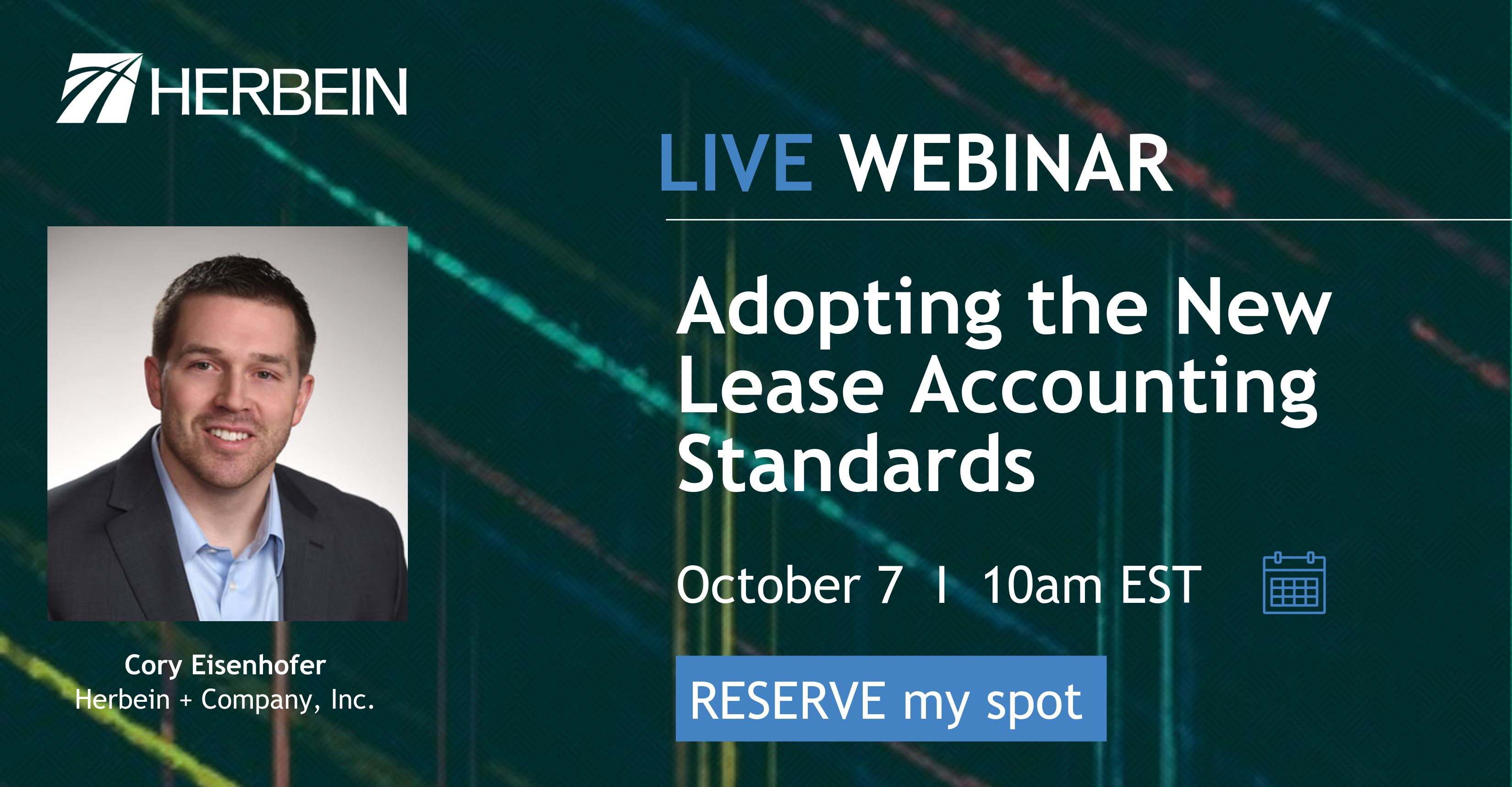ASC 842: How to Plan Now for Changes in Lease Accounting Standards
ASC 842: How to Plan Now for Changes in Lease Accounting Standards
A major change in the way private companies account for lease assets and liabilities on their balance sheet has been in the works for years, and the implementation date is quickly approaching.
In February 2016, the Financial Accounting Standards Board (FASB) issued Accounting Standards Update 2016-02, known as ASC 842, to provide new guidance on leasing standards and supersede previous guidance under ASC 840.
Earlier guidance allowed organizations to omit certain lease assets and liabilities from their balance sheet, potentially distorting key financial ratios. ASC 842 was designed to close that loophole of off-balance sheet operating leases, thereby providing a more transparent picture of a company’s financial health to lenders and investors.
Implementation Delays
ASC 842 was originally scheduled to go into effect for reporting periods starting after December 15, 2019. However, to give private companies and nonprofit organizations more time to prepare for implementation, FASB announced a delay in October 2019.
COVID-19 resulted in another delay - with the new standard taking effect for private companies and nonprofits for fiscal years beginning after December 15, 2021 and interim periods within fiscal years beginning after December 15, 2022. Early adoption is permitted.
How to Prepare Now
Public companies adopted the new lease standards on January 1, 2019 and their transition issues provide a good roadmap for private companies for dealing with the challenges ahead.
There are several things that businesses and nonprofits can do now to prepare for ASC 842:
- Create a Timeline – The time to start is now. Identifying and reclassifying lease commitments is a time-consuming process. Businesses should create timeline benchmarks to keep their progress on track.
- Understand the New Standards – FASB offers a detailed overview at https://www.fasb.org/leases
- Lease Review – All organizations should establish a baseline understanding of their existing lease contracts, including embedded leases or leases that are part of a larger agreement such as a service or maintenance contract.
- Data Collection – A clear lease data collection process will help with financial reporting accuracy. All employees should understand their role in the process.
- Technology Review – To comply with the new standards, businesses may need to implement new accounting software. Numerous lease tracking platforms are available to ensure compliance with ASC 842 including LeaseCrunch, which Herbein + Company, Inc. is using to assist clients.
- Transparency to Stakeholders – With potentially large adjustments being made to financial statements, companies may appear to be more highly leveraged. Investors and donors should be kept well-informed throughout the process to avoid any confusion.
- Transparency to Lenders – Lenders should also be kept well-informed since potential changes to the balance sheet could trigger covenant violations.
- Industry Evaluation – Industries with typically large brick-and-mortar footprints could see a greater impact from ASC 842 and should make appropriate time and staffing adjustments in advance. These include retailers, restaurants, drug stores, supermarkets, and telecommunications companies.
Successfully implementing ASC 842 is going to take commitment from more than just the finance and accounting departments of companies and nonprofits. Lease agreements are frequently arranged by IT, legal, real estate and procurement departments and cooperation at all levels will be critical.
The new lease accounting standard goes into effect in 2022 for private organizations, but it's essential that businesses start planning now: Visit our Lease Accounting resource page here.

Reach out to your Herbein advisor at info@herbein.com for more assistance and continue to check herbein.com for updates.